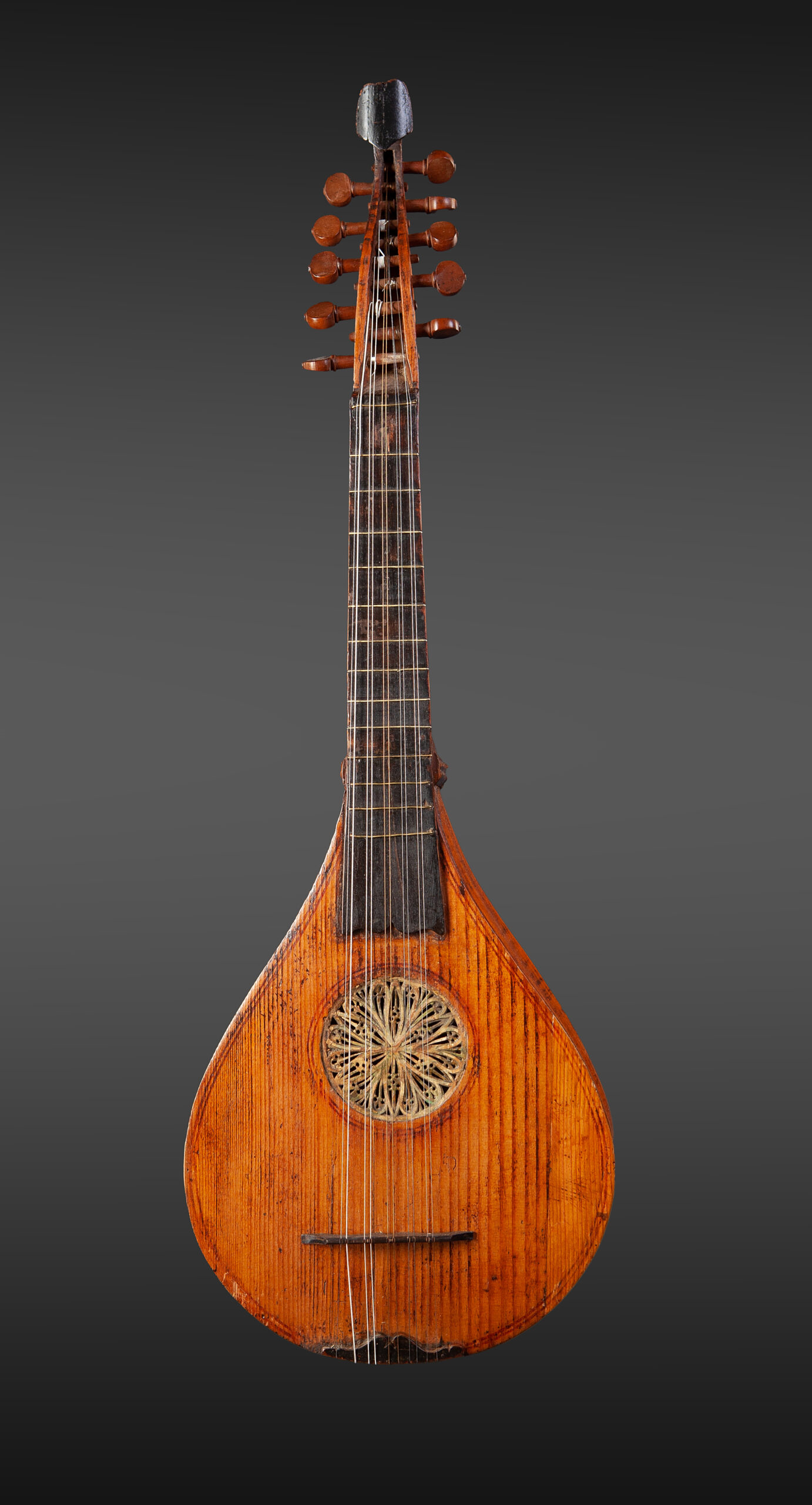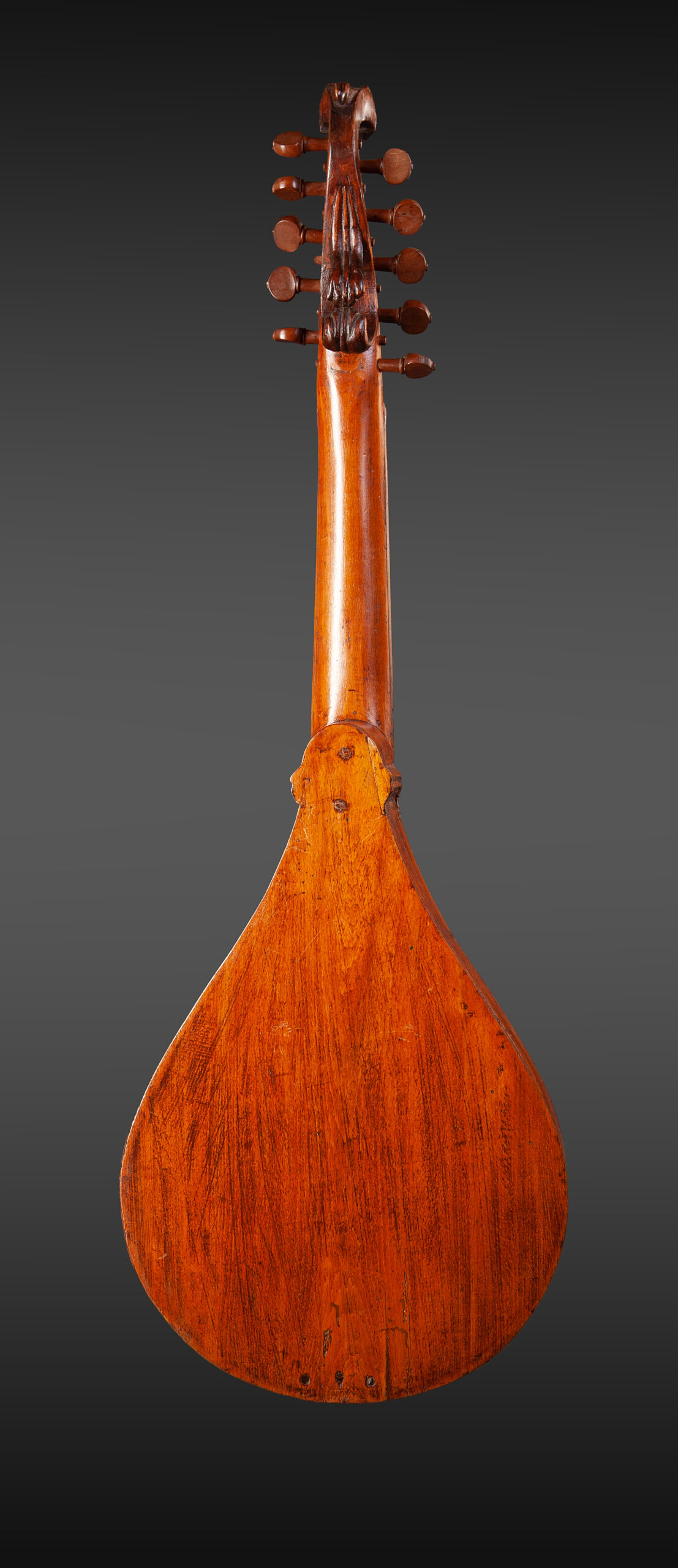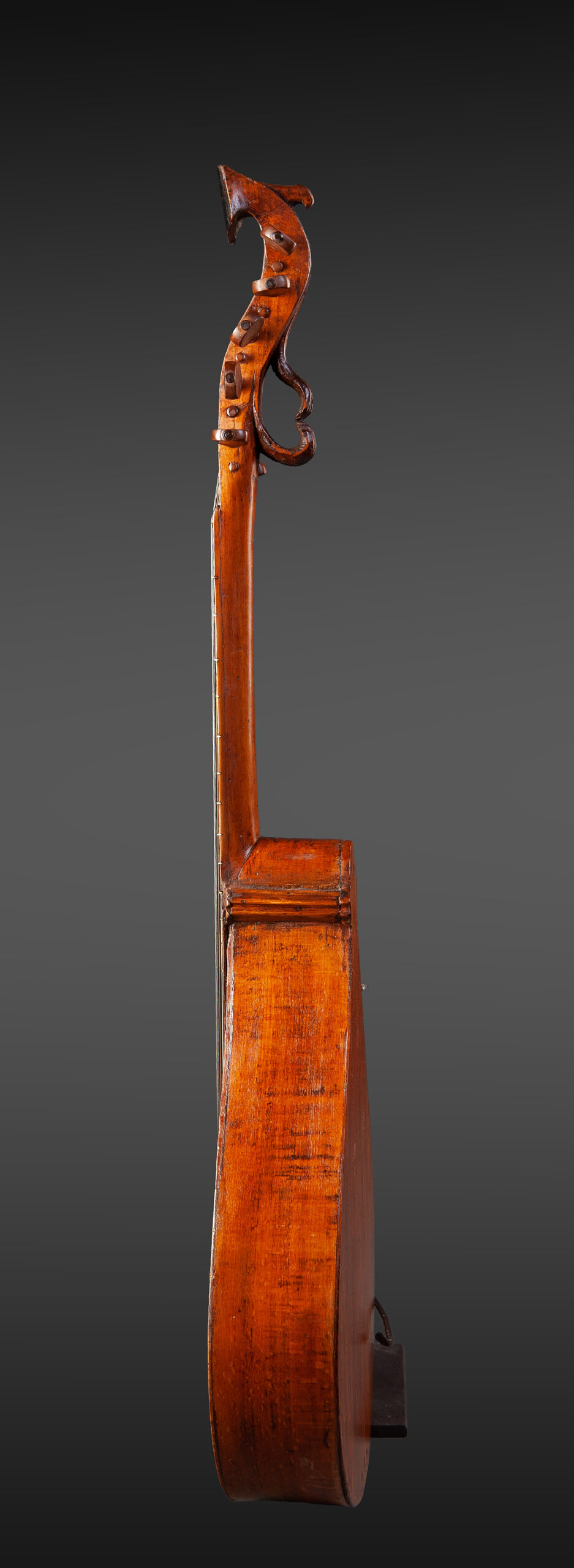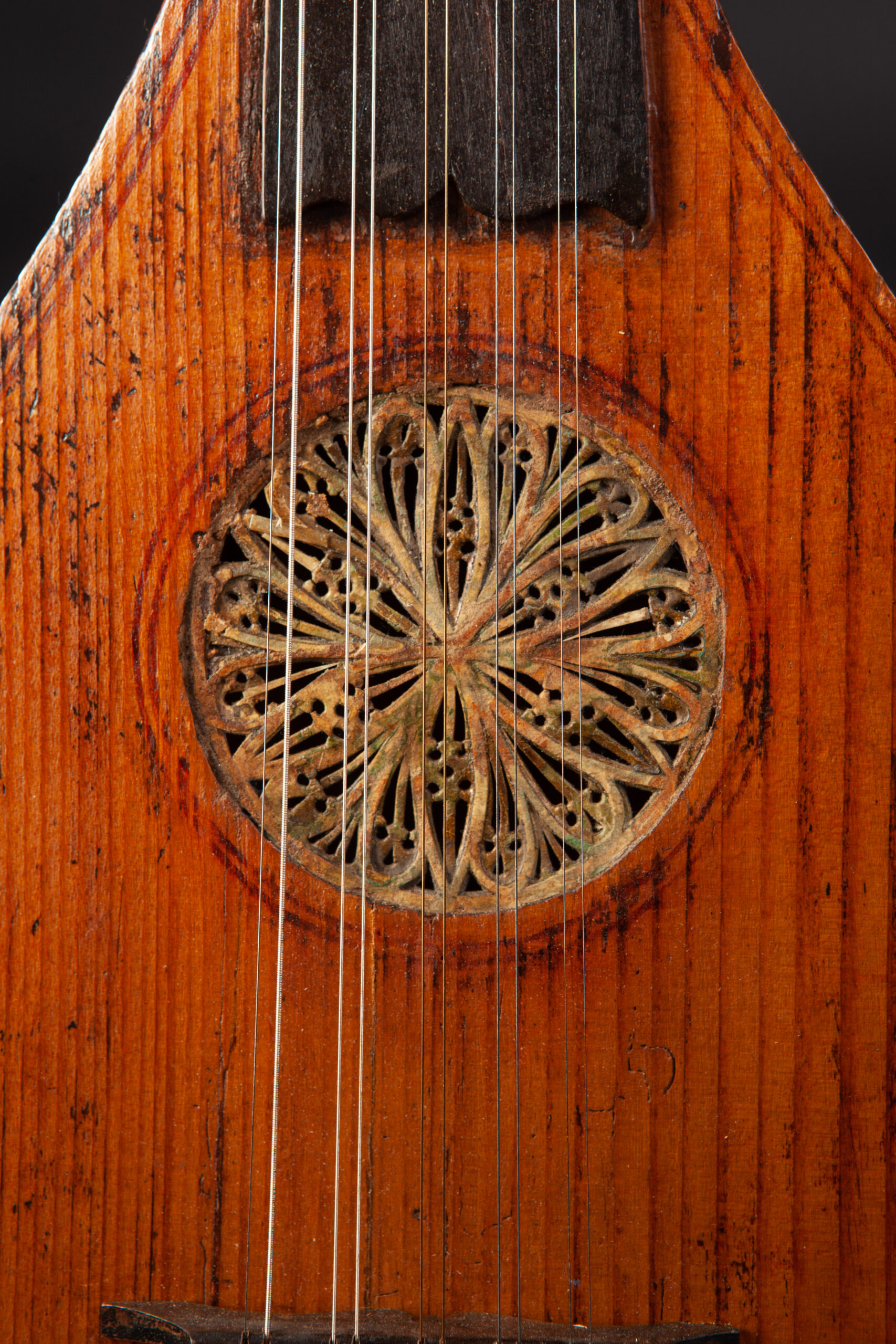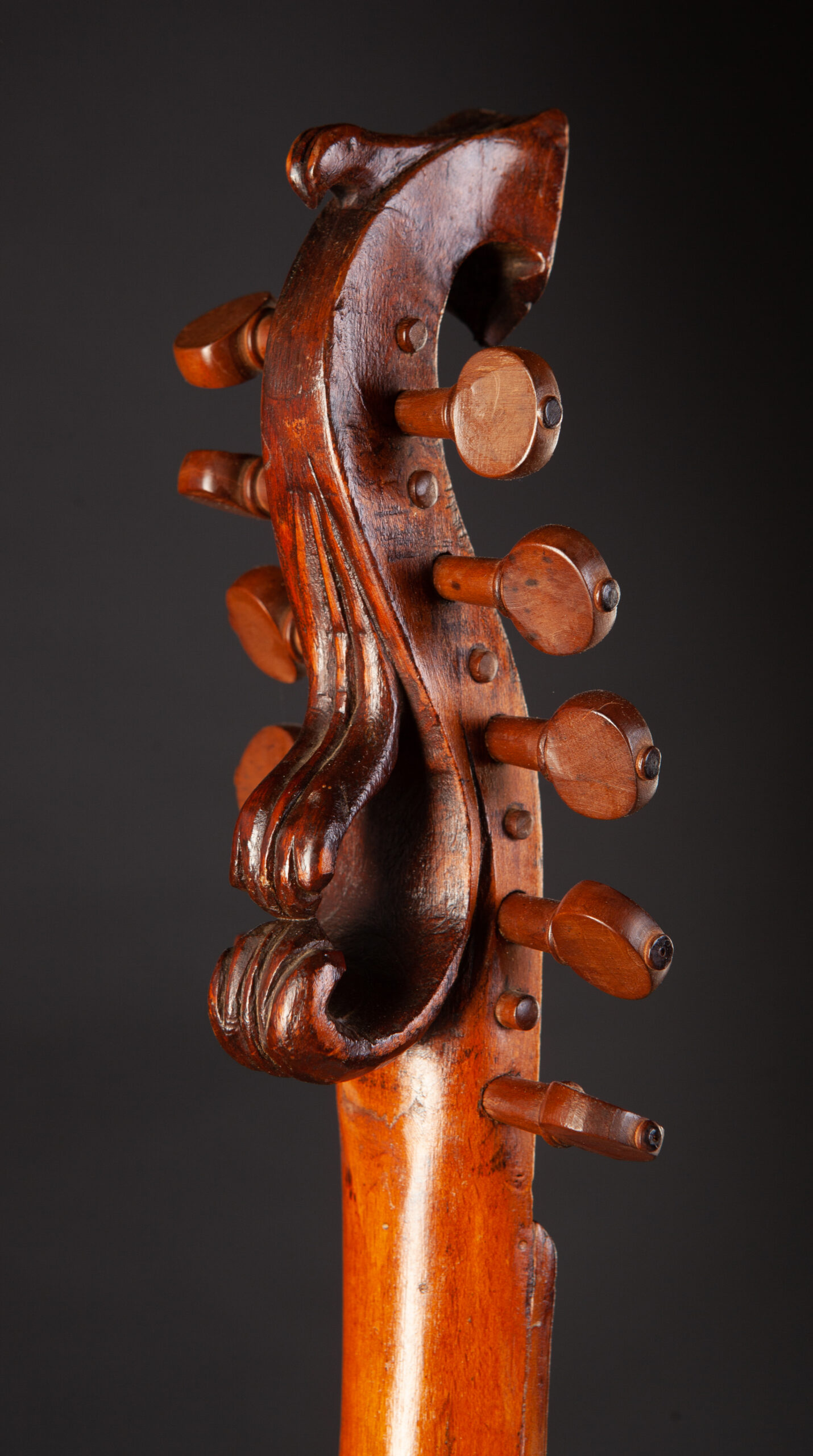CISTER
Germany, 17th – 18th century.
Five-course cittern probably from Thuringia, based on certain making elements such as the mounting of the neck, the shape of the head coat of arms and the choice of wood.
The protruding parts on the back of the pegbox bear witness to an older period than those of instruments of this type observed until then. Characteristic of the cisterns made in the 16th century in northern Italy, this hook with scalloped shapes brings a practical and aesthetic element that we have never encountered on cisterns after the 16th century. Whether in private or public collections.
The soundboard is made of fir, the back is made of plane tree. The handle and head are made of fruit wood; (birch?) The rosette in cut parchment and the replaced pegs in boxwood.
Length: 76.8cm. Width: 25.7cm. Body height: 7.2cm.
Bibliography:
Instrumentarium: Lipsiense; zistern. Musikinstrumentenmuseum der Universität Leipzig.1999.
